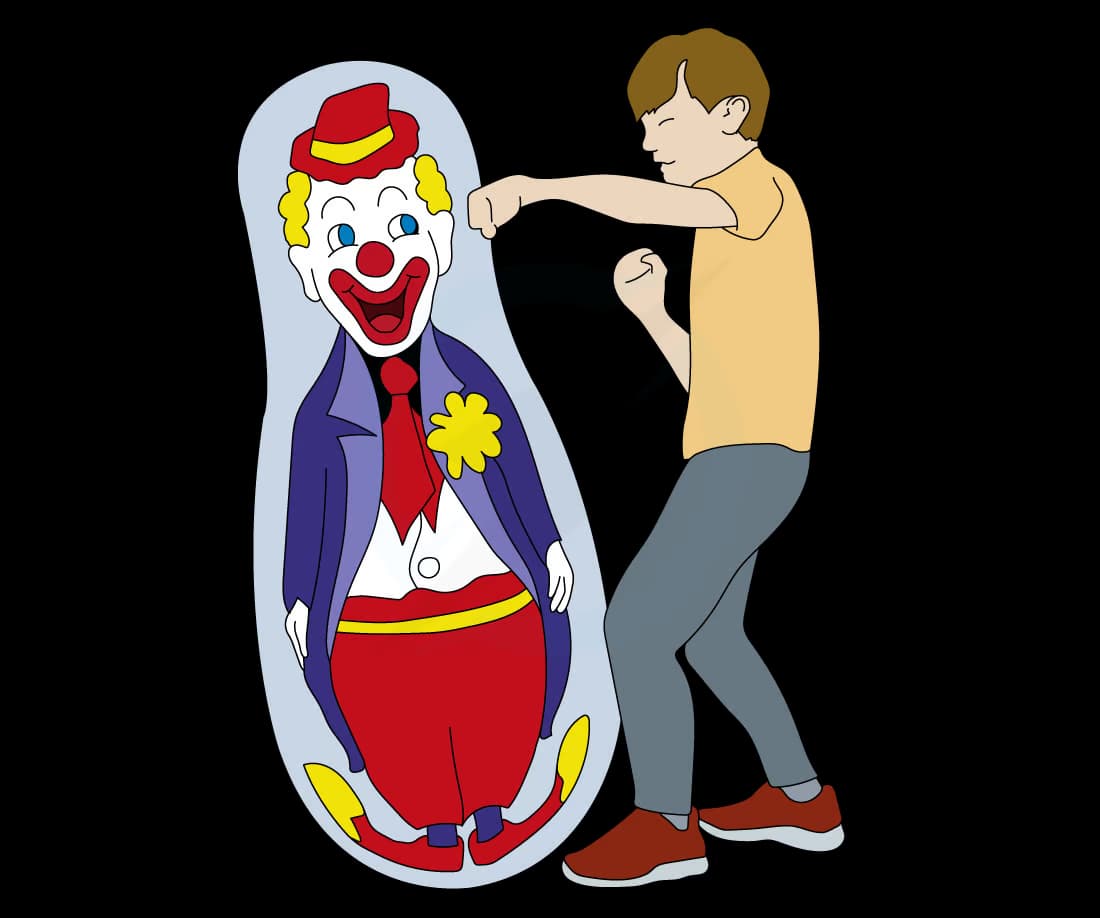Bandura's Research (AQA AS Psychology) : Revision Note
Bandura's research
Bandura (1961) set up the following study to investigate social learning theory (SLT) in terms of whether children would imitate an aggressive role model
Aims:
To investigate the effect of observed aggression on children's behaviour
To investigate the effect of same-sex modelling on children's aggressive behaviour
Procedure:
72 participants took part in the study
36 girls
36 boys
Aged between 37-69 months
The children were taken from the Stanford University nursery
Bandura asked the nursery staff to rate each child's aggression before the experiment
Bandura used the nursery staff's aggression ratings to devise a matched pairs experimental design so that each condition of the independent variable would comprise an equal balance of aggressive children e.g.
a high-aggression child in one condition would be matched with a high-aggression child in another condition
An adult male or female model was observed per condition (the models were not known to the children) with a large inflatable doll named Bobo
There were three conditions of the independent variable:
Aggressive model – The model behaved aggressively towards the Bobo doll, using pre-determined, standardised behaviours e.g. hitting Bobo with a toy hammer
Non‐aggressive model – The model behaved in a non-aggressive way
Control group - No model was present
There was an equal number of times in which a same-sex model or opposite-sex model was used per condition
Each child observed the behaviour of the model for 10 minutes (aggressive or non-aggressive depending on the condition)
After this period of observation, each child was taken down a corridor and to another room
Each child was told that they could not play with the toys in the new room as they were being saved for other children (the aggression arousal phase, to ensure a baseline across conditions)
Each child was then taken to a room containing a Bobo Doll, aggressive toys such as a mallet and a dart gun and non-aggressive toys such as farm toys and crayons
The participants were observed in the Bobo Doll room using a one-way mirror for a duration of 20 minutes
Findings:
Children who had observed aggressive behaviour were more likely to be aggressive towards the Bobo doll
Boys were more physically aggressive
Girls were more verbally aggressive
Children were more likely to imitate the behaviour of the same-sex role model
Conclusion:
Aggression can be learned via the mechanisms of SLT
Imitation of aggression can occur after only a single exposure to the aggressive act
Aggression may be observed in one setting and imitated in a different setting

Examiner Tips and Tricks
It is important to note that Bandura's (1961) study does not include any sort of reinforcement in the procedure. Subsequent research by Bandura (1965) introduced vicarious reinforcement: he was interested to see if children would be more likely to imitate a role model that they saw being rewarded for their aggressive behaviours.
Evaluation of Bandura's research
Strengths
Bandura used a well-controlled, standardised procedure across several phases
This means that the study could be replicated easily
Repeated replication of a study means that the results can be checked for consistency across time and using different samples
The above observations mean that the study has good reliability
The results of Bandura's study fuelled much debate as to children's exposure to the depiction of violence on television
This means that his study has good external validity as it can be applied to settings and behaviours beyond the experimental space itself
Limitations
Children do not 'learn' aggression in lab conditions; real-life violence is generally observed in familiar settings involving familiar adults
This makes Bandura's study less ecologically valid than research conducted in the field would be
There are numerous ethical issues with this study
Asking nursery workers to rate children's aggression is intrusive and may have encouraged bias
Some of the children were exposed to an aggressive adult which may have alarmed and distressed them
The aggression arousal phase may have upset the children
The children in the aggressive condition may have gone on to use similar aggression outside of the experiment
Worked Example
Here is an example of an A03 question you might be asked on this topic.
AO3: You need to analyse and evaluate key concepts, ideas, theories and research.
Q. Evaluate Bandura's Bobo doll study.
[6 marks]
Model answer:
Outline one limitation:
One limitation is that the study was conducted in controlled lab conditions [1 mark]
Explain why this is a limitation:
This is a limitation as lab conditions do not reflect how aggression is observed and learned in real social contexts. [1 mark]
Expand further on this limitation:
The inability of the study to reflect how aggression is learned in real social contexts means that it lacks ecological validity. [1 mark]
Outline one strength:
One strength is that the study used a matched-pairs design. [1 mark]
Explain why this is a strength:
This is a strength because a matched pairs design ensures that individual differences do not skew the results e.g. having all of the aggressive children in one condition would not measure the effect of the IV on the DV. [1 mark]
Expand further on this strength:
Controlling for individual differences increases the study's internal validity. [1 mark]

You've read 0 of your 5 free revision notes this week
Unlock more, it's free!
Did this page help you?

